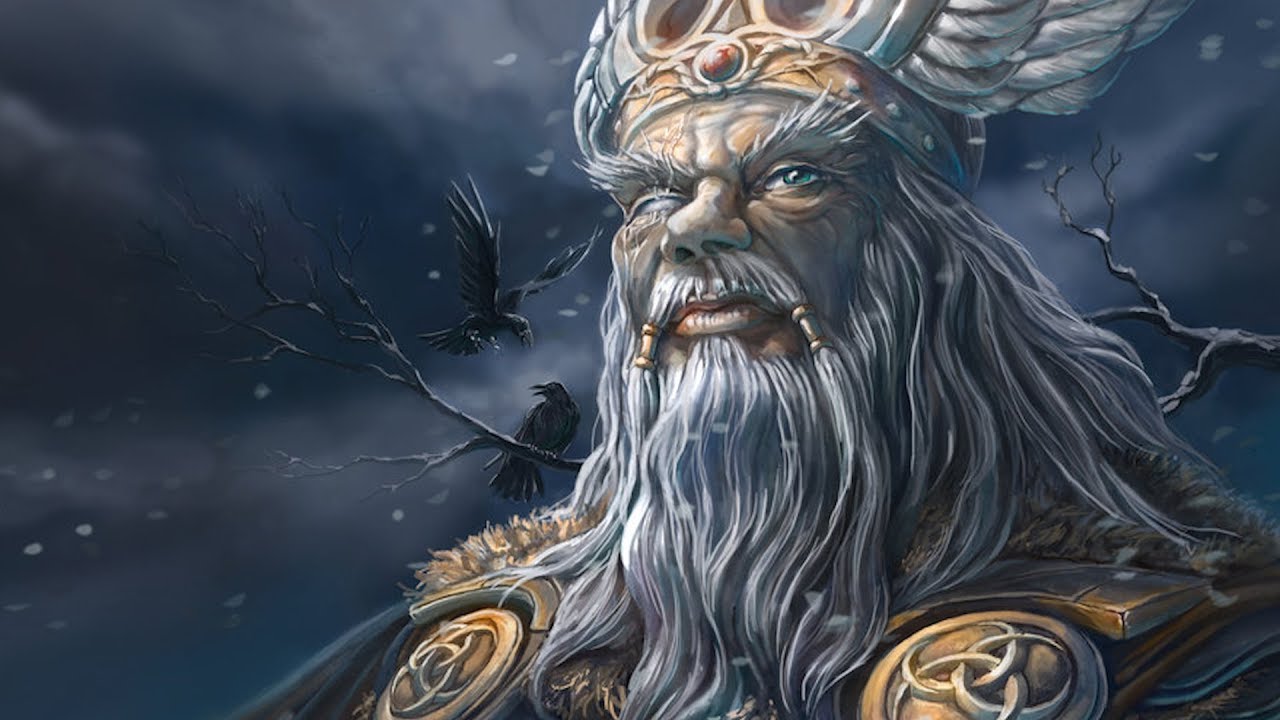Dr. Jackson Crawford argues that the title All-Father comes from the Old Norse word “fǫður,” which means fathers. Crawford further argues that this is because the phrase “faðir,” meaning father, and “fǫður,” meaning fathers, are used interchangeably in Old Norse. The problem with this argument is that it fails to consider that the word “fǫðr” can also mean fathers in Old Norse. Additionally, Crawford argues that Óðinn is not a representative of the Indo-European pantheon, but rather, he is the world’s creator, teaching humans about ritual sacrifice and teaching them how to keep the world in order.
If you have watched the video, Crawford provides very little consideration of why the translation is wrong outside the bounds of language. Instead, Crawford’s view goes that since the 13th century, when Snorri Sturluson wrote the Prose Edda, the word Alfǫðr has been used as a name for Óðinn, a term that has commonly been interpreted in English as All-Father. And while the prefix “Al” does correspond with the English “All,” the phrase “fǫðr” is somewhat ambiguous and is often considered to mean “father .” This is because we have the words in Old Norse “faðir,” meaning father, and “fǫður,” meaning fathers.
Some academics have problems with this translation when accompanied by the representation of Óðinn in parts of Old Norse mythology, as he is not seen as a father to all. He was not the first god. That was Buri, who then had a son, Borr, who then fathered Óðinn, along with his siblings.
Also, Óðinn did not father man. Instead, he and two other gods made man, with the other gods being either Villi and Vi if you believe the Prose Edda or Hœnir and Loður if you believe the Poetic Edda. The latter is an academically better choice, as it is generally considered a more reliable source document. And here, it doesn’t seem to make sense that the title came from this act.
In terms of fathering most human children, then that award goes to Heimdallr, a son of Óðinn, who, under the name of Ríg, in the Rígsþula, fathers the children of all the classes. And to counter this, there is one sentence written in the Prose Edda that could explain the All-Father title, which goes “…this is why he can be called All-father, that he is the father of all the gods and of men and of everything that has been brought into being by him and his power.”
But this is not true and so a flawed statement. As discussed in the video, he literally wasn’t the father of all gods and men. This description can look like an attempt by Snorri Sturluson, the Christian Scholar who wrote the Prose Edda, to try and align Óðinn with a pantheon much like the Greek Gods while labeling him a name that those who follow the Abrahamic religions would understand. This helped his agenda to convert non-Christians to Christianity, which we see in other stories within the Prose Edda. There are, however, theological perspectives to the All-Father debate, including thoughts that as Óðinn was the Father of the Slain, and as we live in the mortal world, he would eventually become a father to all. However, this does not make sense either because he was father to half the slain or, even more specifically, half the people who died in battle.
The reason this makes sense to me comes from the Proto-Indo-European Creation Myth.
In the beginning of the cosmos, two beings were created, Manus and Yemo, meaning man and twin, and a giant cow. Manus wanted to stop wandering and have a home, so he sacrificed Yemo, and from his body created the earth and the humans. Manus then traveled down to the earth and became the earth’s first priest, teaching that he would keep the world in order through ritual sacrifice. These myths seem to have similarities; if you keep the cow within the Indo-European myth, replace Yemo with Ymir, and replace Manus with Óðinn. Then you have a story that is very much comparable to the Old Norse Creation myth. Here, between these two myths, Manus and Óðinn kill the Twin figure, build the world with his body parts and then create man. Then they come to earth, and as a priest figure, who is seen as the focal point to the gods, to whom magic is known, to whom humans see, and Manus and Óðinn teach man about sacrifice, all to keep the world in order.
So if Óðinn replaced Manus, it emphasizes that he is not a deity or representative from the Indo-European pantheon. He is not the equivalent of Dyēus Phtḗr, the Sky Father. Instead, he is the world’s creator, the first priest who walked the world teaching about ritual sacrifice and teaching us that through this, we can keep the world in order.
